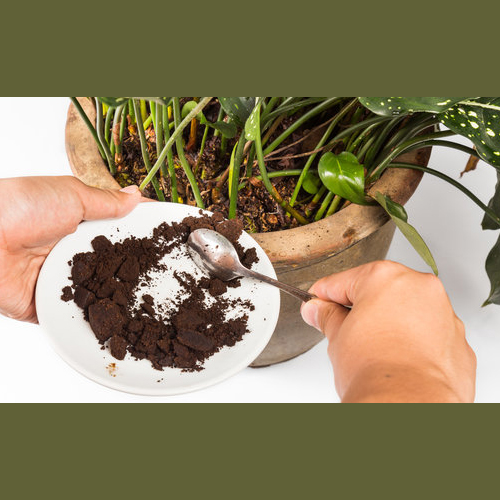Give your used coffee grounds new life! After you brew your Sasquatch Coffee in the morning, hold off on tossing your spent grounds into the compost or garbage. Here are a few ideas on great ways to reuse your old grounds (and a few ways not to use your grounds as well):
Cover scratches in wood
The rustic look is all the rage, but not everyone appreciates scratches on their wood floors or furniture. While buffing with a shelled walnut works best for repairing light-stained woods, experts agree that coffee grounds are a better match for darker woods. First, mix used coffee grounds with a few drops of water to create a thick paste. Then rub the paste into the scratches, and let sit for 10 minutes before wiping away the excess, says Mr. Coffee.
Exfoliate your skin
Did you know the solution to your rough elbows is sitting in your coffee machine? “Coffee grounds make a great body scrub,” says Dawn Davis, Beauty Director at TotalBeauty.com. “They’re the perfect size and shape for exfoliating rough elbows, knees and feet — you get a lot of scrubbing action, but they’re still fairly gentle.”
Application method: Combine equal parts coffee grounds and coconut oil (for added hydration and easier application), and rub onto rough skin in a circular motion. Rinse away grounds and pat dry. Note, this treatment is not recommended for your face—“the irregular shape of the grounds can be too rough on sensitive facial skin,” warns Davis.
Tame fireplace ashes
Sprinkling damp coffee grounds onto fireplace embers can help you sweep up ash without kicking up dust. “The damp grounds act as a binder on cool ashes to help contain the dust and particles,” says Maker. Two things to remember: Always let the fire go out completely and don’t dump the grounds from a high distance.
Enrich your compost pile
With many states starting their own government-sponsored composting programs, it may be time to consider the quality of your contribution.
Coffee grounds improve compost in two ways. For one, they typically contain about 2% nitrogen (the same amount as manure), which feeds the micro-organisms that digest plant debris and turns it into compost, says Myers. Secondly, as they decompose, coffee grounds have been shown to suppress common fungal rots and reduce the growth of E. coli and Staphylococcus spp,according to research published by Washington State University. For optimal compost disease-suppression, shoot for 10 to 20 percent coffee grounds per total compost volume.
3 coffee grounds uses that DON’T WORK
Well-intentioned DIY bloggers offer many creative suggestions for how to recycle used coffee grounds, but we checked with the experts, and the following ideas don’t hold water:
Cultivate blue hydrangeas: Truth: Acidic soil allows hydrangeas to absorb more aluminum from the soil, which turns their petals blue. Truth: Coffee grounds are highly acidic. Lie: Adding coffee grounds to your soil will make hydrangeas turn blue. “The problem is, coffee grounds’ impact on the soil is very short term,” says Myers. “It’s very difficult to change soil’s pH.”
Unclog drains: Plumbers agree, nothing will clog a drain faster than the combination of coffee grounds and cooking grease. Even if you flush them down the drain at different times, cooled grease catches on the inside of pipes, lying in wait to make a gluey mess.
Use as roach bait: You may have heard that roaches are attracted to the smell of coffee grounds, which makes them useful as bait for homemade traps. Orkin entomologist Ron Harrison says he’s never heard of this method. The cockroaches would certainly be trapped by the tape, but they’re not particularly attracted to coffee grounds, he explains.
SRC: See the complete post on this subject here: www.huffingtonpost.com/entry/8-genius-ways-to-use-old-coffee-grounds_us_56eaca8ae4b0b25c91849cff
